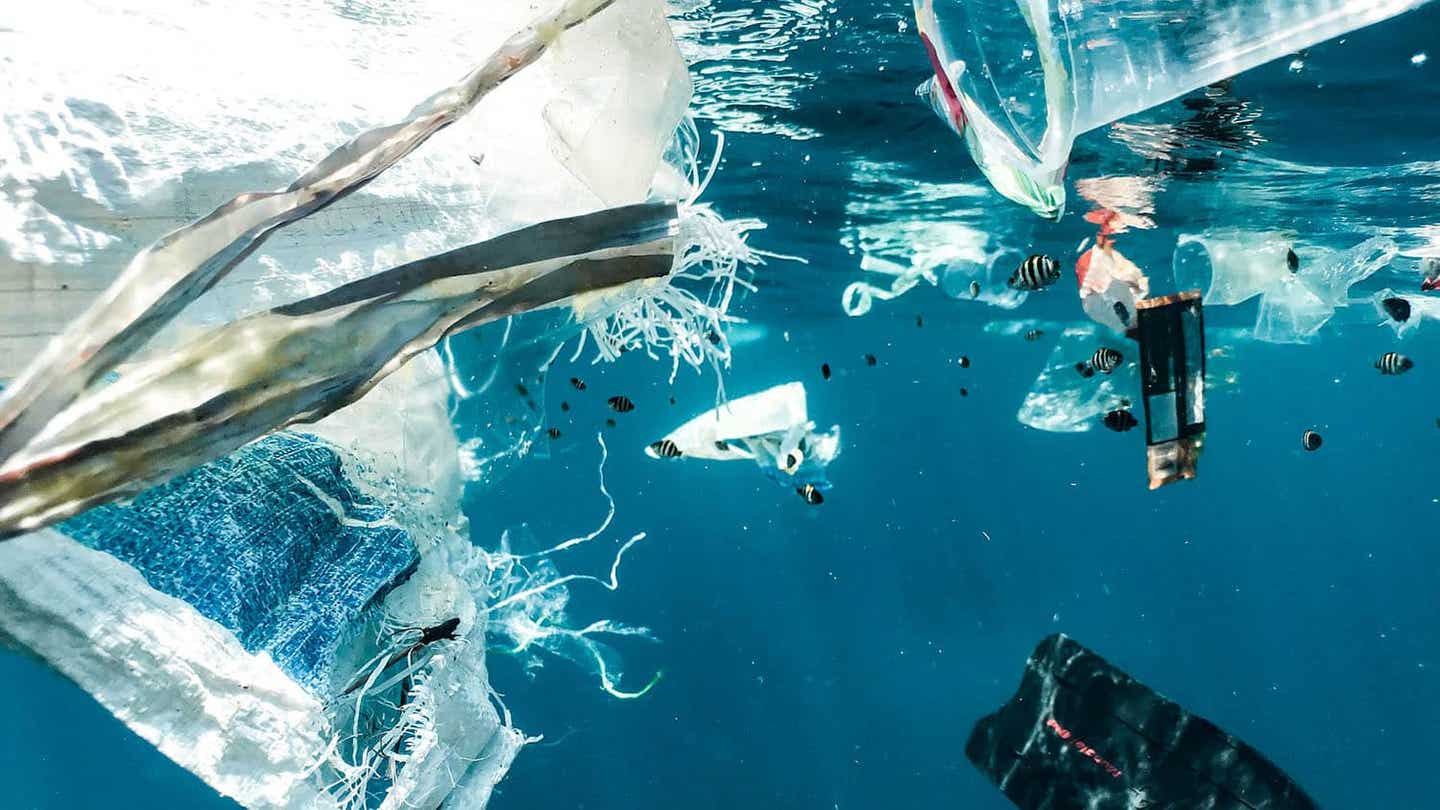New genetically engineered bacteria breaks down plastics in saltwater
With plastic pollution reaching alarming levels in marine environments, this discovery could herald a new era in ecological restoration.

[Sept. 17, 2023: Staff Writer, The Brighter Side of News]
With plastic pollution reaching alarming levels in marine environments, this discovery could herald a new era in ecological restoration. (CREDIT: Naja Bertolt Jensen.)
In a groundbreaking scientific revelation, researchers have unlocked the potential of marine microorganisms to combat the growing menace of plastic pollution in the world's oceans.
The innovation? Genetically engineered bacteria capable of decomposing polyethylene terephthalate (PET), a plastic ubiquitous in products ranging from drinking bottles to apparel. With plastic pollution reaching alarming levels in marine environments, this discovery could herald a new era in ecological restoration.
Nathan Crook, an assistant professor of chemical and biomolecular engineering at North Carolina State University, voiced the significance of this finding: “This is exciting because we need to address plastic pollution in marine environments. One option is to pull the plastic out of the water and put it in a landfill, but that poses challenges of its own. It would be better if we could break these plastics down into products that can be re-used. For that to work, you need an inexpensive way to break the plastic down. Our work here is a big step in that direction.”
Related Stories
Marrying the Abilities of Two Bacteria
To harness the promise of nature in this quest, the team combined the prowess of two bacteria. Vibrio natriegens, the first of the duo, thrives in saltwater environments and possesses a unique characteristic: its rapid reproductive rate. The second, Ideonella sakaiensis, stands out due to its ability to produce enzymes which decompose PET.
Delving into the molecular mechanics, the researchers extracted the DNA from I. sakaiensis responsible for producing plastic-breaking enzymes and merged it into a plasmid. These plasmids are genetic sequences which can autonomously replicate inside a cell, without relying on the host cell's chromosomes. By integrating this plasmid into V. natriegens, the scientists could coax it into manifesting the crucial enzymes.
Crook illustrated this pioneering work, saying, “This is scientifically exciting because this is the first time anyone has reported successfully getting V. natriegens to express foreign enzymes on the surface of its cells.”
Validating this effort, V. natriegens demonstrated its capability to break down PET in saltwater at ambient temperatures.
Proposed PET complete hydrolysis pathway by Is29. IsPETase is secreted to the cell exterior under the guidance of a signal peptide, then depolymerizes PET to produce MHET as the major product. (CREDIT: AIChE Journal)
“From a practical standpoint, this is also the first genetically engineered organism that we know of that is capable of breaking down PET microplastics in saltwater,” Tianyu Li, the paper's first author and a Ph.D. student at NC State commented. “That’s important, because it is not economically feasible to remove plastics from the ocean and rinse high concentration salts off before beginning any processes related to breaking the plastic down.”
The Road Ahead
However, while this discovery is monumental, it’s just the beginning. Crook highlighted three key challenges that need addressing. Firstly, directly integrating the I. sakaiensis DNA into V. natriegens’ genome could ensure that the plastic-degrading enzyme production becomes an inherent trait of the modified organism.
PET hydrolysis reactions by IsPETase and IsMHETase. IsPETase catalyzes the hydrolytic cleavage of PET at ester bonds to generate MHET as a major product, BHET and TPA as minor products. As one of the minor products, BHET can be further hydrolyzed by IsPETase into MHET and EG. (CREDIT: AIChE Journal)
Secondly, there's a need to further tweak V. natriegens so it can metabolize the byproducts generated from PET breakdown. Lastly, the altered V. natriegens should be designed to convert the decomposed PET into valuable compounds for the chemical sector.
Surprisingly, the third challenge might be the most straightforward. "Breaking down the PET in saltwater was the most challenging part," Crook said.
BHET hydrolysis results from negative controls (left and center) and Vn displaying IsPETase by two different surface anchors. (CREDIT: AIChE Journal)
Seeking to optimize this process, Crook expressed his enthusiasm for future collaborations: “We are also open to talking with industry groups to learn more about which molecules would be most desirable for us to engineer the V. natriegens into producing. Given the range of molecules we can induce the bacteria to produce, and the potentially vast scale of production, which molecules could industry provide a market for?”
As global conversations intensify around environmental conservation and as microplastic pollutants threaten marine ecosystems, solutions like these genetically engineered microorganisms underscore the potential of merging biology and technology. Only time will tell how this novel solution reshapes our strategies against the pervasive problem of plastic pollution.
For more environmental news stories check out our Green Impact section at The Brighter Side of News.
Note: Materials provided above by The Brighter Side of News. Content may be edited for style and length.
Like these kind of feel good stories? Get the Brighter Side of News' newsletter.



